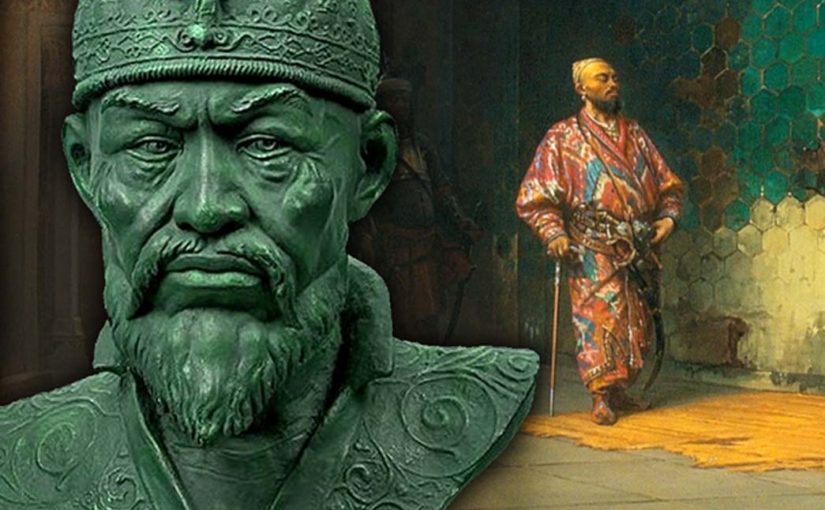It’s nice to think that we are “modern”, “enlightened”, “progressive’ and “forward thinking”. But, unfortunately that is a big lie. Humans, at best, can only sustain a calm period of coexistence for a handful of decades. No longer. The fact and the truth is that blood was spilled ruthlessly for most of human history.
Routinely.
If you are living in the belief that wars will forever be isolated from you, then buckle up. It can hit with surprising suddenness and completely alter the landscape of your reality forever.
It’s the historical norm.
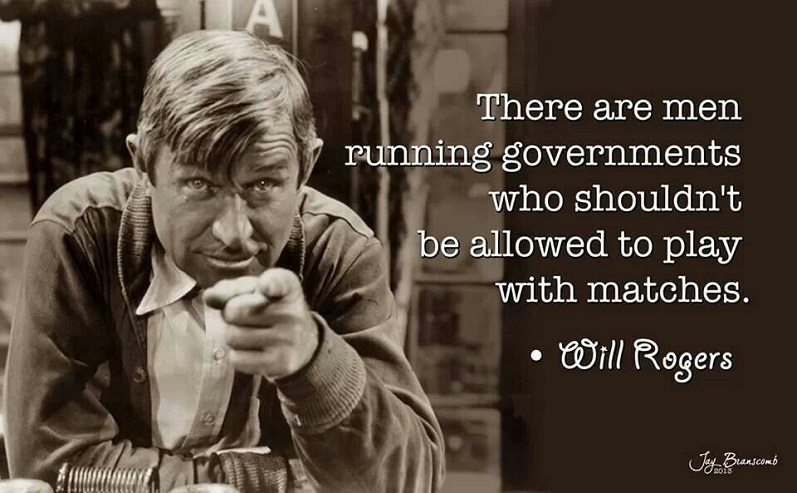
Prepare yourself for a painful recap of the most savage wars that ever took place. Fought over religion, political supremacy, or conquest, the conflicts of the past killed tens of millions and left the land we live today blood-soaked.
War can occur anywhere, at any time, and affect anyone. No one is immune.
1. French Wars of Religion – 3 million
Expert Tip: Wars over ideology can be very fierce, bloody and dangerous.
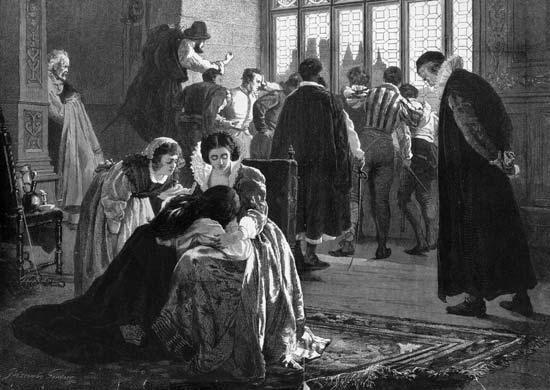
A death toll of 3 million is a good introduction, especially because we will first explore a war erupting solely because some overzealous folks couldn’t agree to what religion is better.
My God is better! No! You are wrong. My God is better! Hell with you and what you think! You need to die!!!!
The French Wars of Religion is an umbrella term for the many frictions that opposed the Catholics (and the Huguenots (Reformed Protestants)). Once started, everyone wanted in on it. They were fighting each other over interpretations of Biblical passages, for goodness sake!
He said this! But, he meant that! Die! Heathen scum!
Indeed, once it started there was no stopping it. It moved on and took on “legs of it’s own”. Lordy! Carried out throughout the 16th century, it aroused other European powers into picking sides.
Ugh!
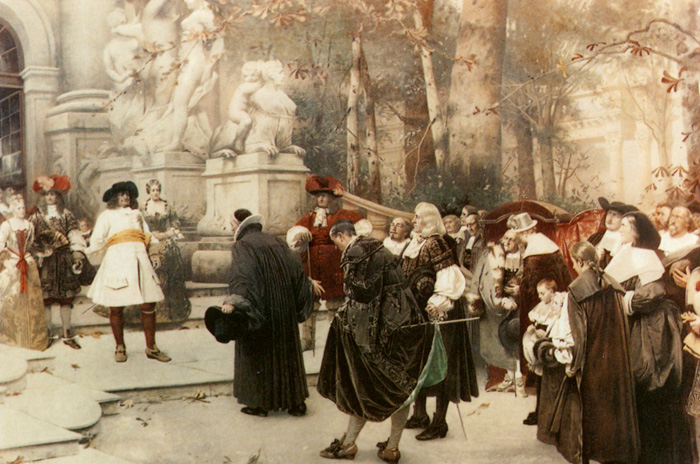
Both Hesse and Brandebourg, which was also reformed, had suffered greatly during the Thirty Years War and for this reason the Huguenot refugees were made welcome.
I know it’s confusing. Here’s the official take…
Huguenots were a religious group of French Protestants. Huguenots were French Protestants who held to the Reformed, or Calvinist, tradition of Protestantism. The term has its origin in early-16th-century France. It was frequently used in reference to those of the Reformed Church of France from the time of the Protestant Reformation. By contrast, the Protestant populations of eastern France, in Alsace, Moselle, and Montbéliard were mainly German Lutherans. - Wikipedia

And yet another opinion…
The French Wars of Religion were a prolonged period of war and popular unrest between Catholics and Huguenots (Reformed/Calvinist Protestants) in the Kingdom of France between 1562 and 1598. It is estimated that three million people perished in this period from violence, famine, or disease in what is considered the second deadliest religious war in European history (surpassed only by the Thirty Years' War, which took eight million lives). - French Wars of Religion - Wikipedia
What happened was scandalous mostly because the Catholic Church considered the atrocities a sign a divine retribution.
Yeah... God approves of this war. He told me.
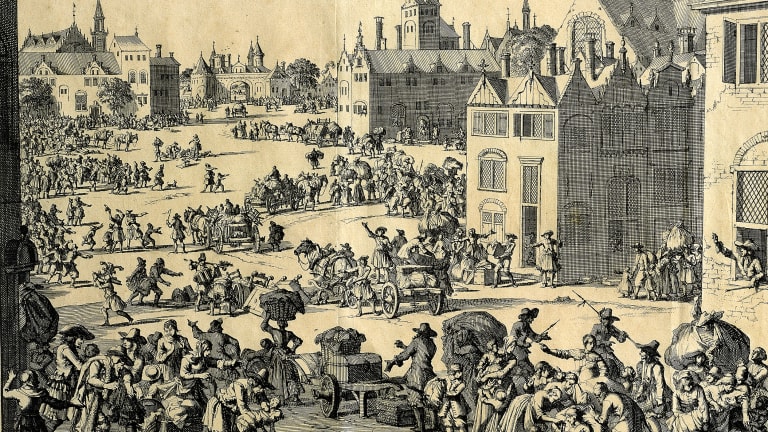
And still yet another explanation…
The massacre of Huguenots at Vassy in 1562 began the Wars of Religion between the Catholics under the leadership of the Duke of Guise and the Huguenots under the leadership of Prince de Conde and the King of Navarre. The war was interrupted briefly, but flared up again after the infamous... - Huguenot Wars - World History
I know.
I know, I’ve given three instances of explanation, and still I haven’t figured it all out. It’s nuts. It’s crazy. It’s insane.
We look back at this time and shake our heads. But, you know…
… it was a different time and place.
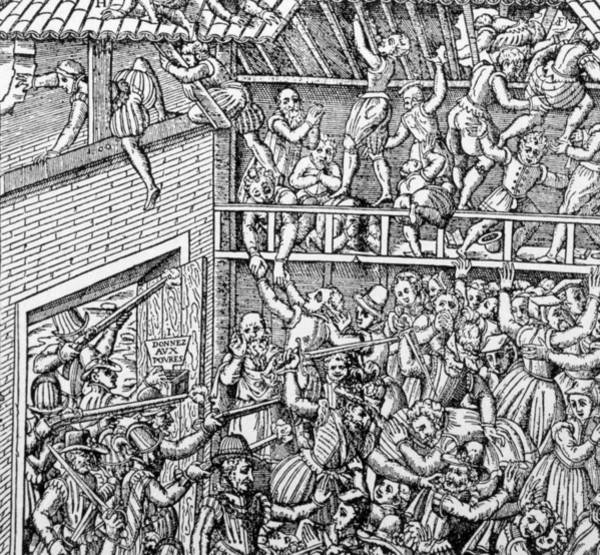
You will be surprised to know the changed little since then. Aside from technology advances and the ability to manipulate large groups of people by ideology…
… nothing has changed.
Expert Tip: We are not more enlightened today compared to the past.
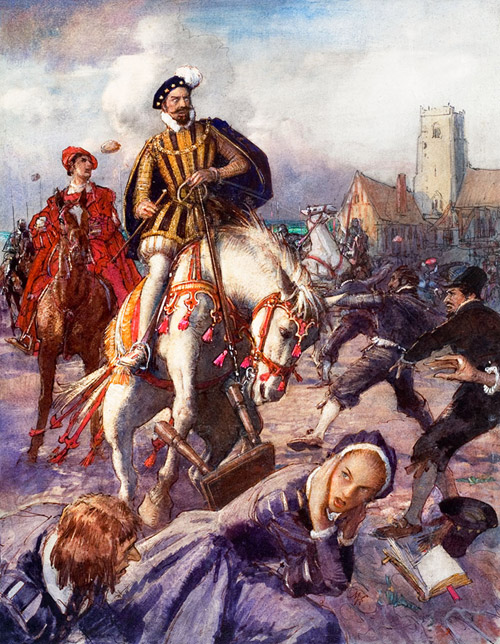
Yeah, yeah… I know. It’s really difficult to get a feel for what was going on at that time. Woodcuts cannot compare to colorful photos and dramatic images. Their clothes are odd and their customs are strange. It’s difficult to imagine. I mean … men wore tights with cod pieces for Pete’s sake!
Well… anyways…
So let’s move forward to something more recent, then.
2. Great African War – 3.5 million
Africa. Most Americans don’t give a flying fudge about it. The Great African War in all it’s incarnations happened under the Clinton and Bush years. No one cared.
Yet…
…millions died in the hot steamy jungles of the Congo. They fought over… well, it’s not precisely known exactly what they fought about…
…power, money, drugs, sex…
… gold, fun, religion…
… magic, God, spirits, voodoo…
…and potatoes.
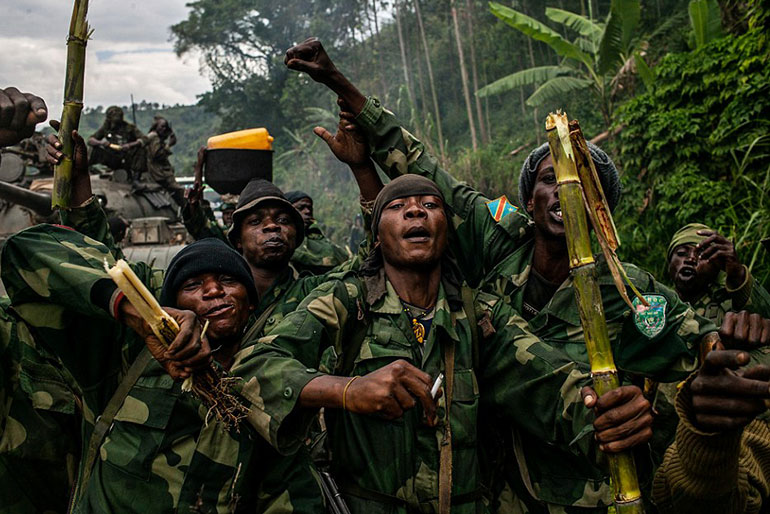
Explaining the loose ends of African politics in under two paragraphs is a daunting task…
A deadly cocktail of inter-ethnic violence, genocide, and warring factions turned the Democratic Republic of Congo into a hellish tropical nightmarish steamy land of never ending suffering and misery.
Who’s to blame?
The fall of the former colonial empires left Africa with so many wounds the crystallization of the new nations was hastened and often uninspired…
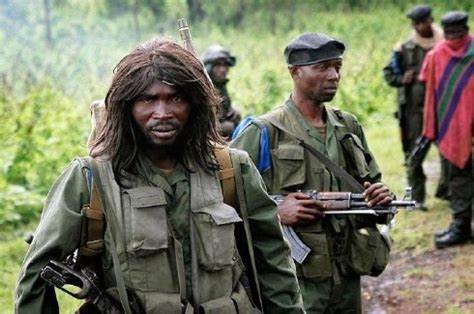
Almost all neighboring states sent troops to support one side or the other for the duration of the conflict (1998 – 2002).
The Congo conflict showed once more the awful consequences of bringing a war to poor communities. The hundreds of thousands that died in combat were soon joined by the millions that perished through disease and starvation.
Do you know what the worst part is?
Even after a peace treaty had been signed, war is still smoldering, claiming lives on such a constant basis that it is no longer news.
Sort of like those shootings in Chicago…
Or the news that Trump is gonna be impeached any day now…

Expert Tip: Some people fight first and then look for an excuse later on.
Check out the war that almost saw France conquer Europe.
3. Napoleonic Wars – 4.5 million
For those of you who are unaware, after the French Revolution…
…when the millions of poor and middle class overthrew the French oligarch aristocrats…
… they didn’t know how to govern.
They were incompetent. So in order to control the people (then, collective known as the “rabble”) they started to engage in war.
Wars, you see, are a great distraction away from the domestic problems at home.
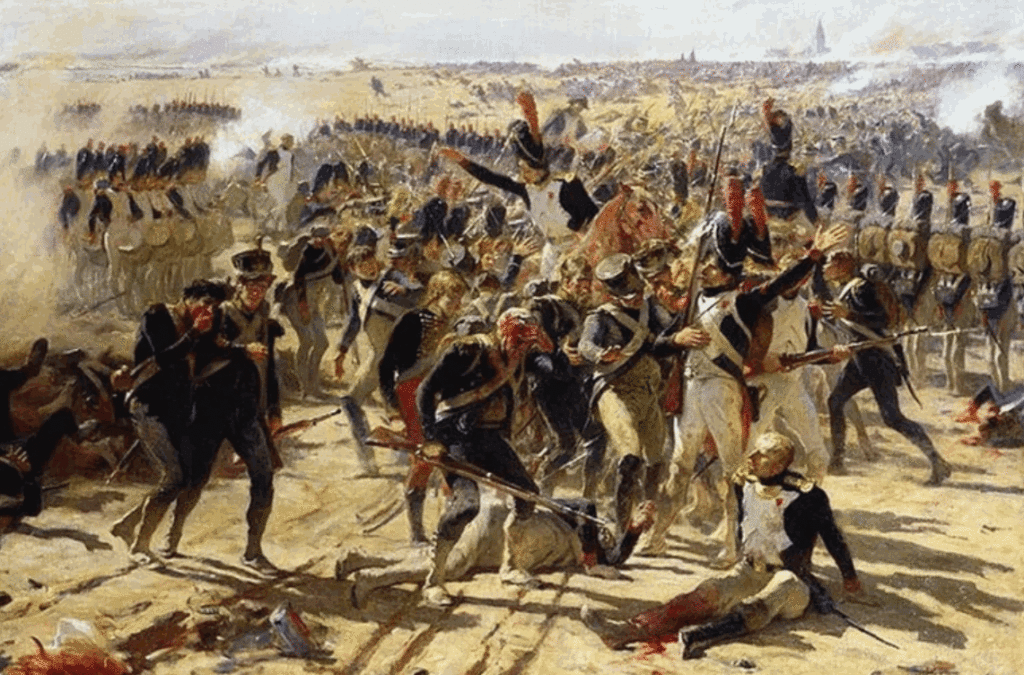
From the chaos of the French Revolution, came military leaders. And, one military ruler emerged with the ambition of leading France to greatness.
Napoleon Bonaparte was such a brilliant military tactician that he convinced his fellow countrymen to crown him emperor. Consider the fact that French did that just ten years since they guillotined their last king.
Yeah…
Pure genus!
— Not. —
Rule by popular opinion is idiotic. It get’s people killed.
America! Listen up and learn something why don’t ya?
Expert Tip: Rule by manipulated mob is called “democracy”. It only favors the wealthy oligarchy.
The Napoleonic Wars was probably the first time a European power attempted continental hegemony. Between 1803 and 1815, it became sort of a cliché to hear the news of Napoleon’s army won another decisive battle against various coalitions of Austrian, Prussian, and Russian forces.
The French were on a winning streak.
Nothing could stop them.
So…
They kept on pushing. They kept on prodding. They keep on… they were so confident that they would forever keep on winning.
Expert Tip: Learn to stop when you are ahead.
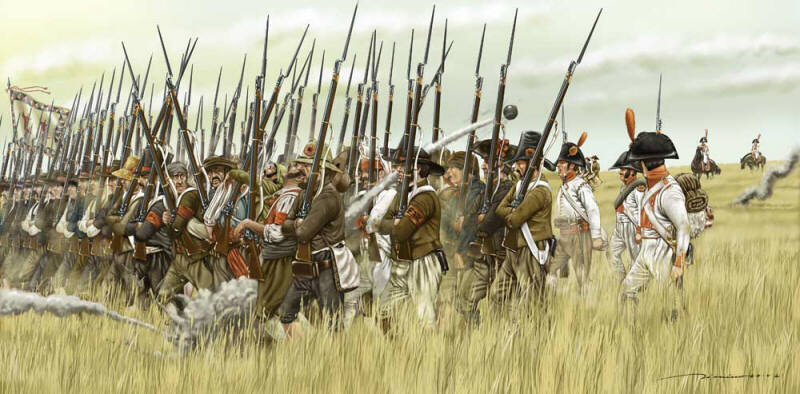
Like I said… America listen up!
Napoleon’s winning strike came to an end with him foolishly attacking Russia during the winter.
I mean… what were they thinking?
Expert Tip: Do not declare war on Asia. They always win.
The battle of Borodino and the long retreat to France are amongst the bloodiest episodes of the Napoleonic Wars.
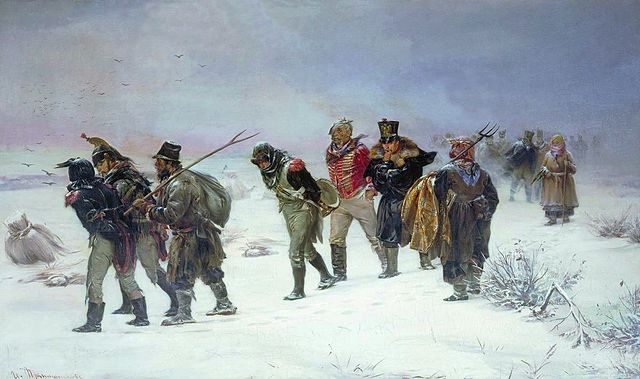
It’s easy to see the Napoleonic Wars as a rehearsal, one hundred years before the “Great War” (World War I) would plunge Europe back into darkness. More than 4.5 million lost their lives, of which a third were French.
That’s what always happens when you follow a charismatic lunatic.
Expert Tip: Do not follow a charismatic lunatic.
4. Reconquista – 7 million
The Iberian Peninsula was the set of a bloody conflict. It was the first major front for Muslims and Christians to slaughter each other.

What we know today as Spain and Portugal might have held Moorish names…
… if it weren’t for the painstakingly way with which the early Christian kingdoms fought the invaders back across the Gibraltar Strait.
And make no mistake, it was bloody.
Expert Tip: Do not live on migration routes.
The kingdoms of Asturias, León, Castile, Navarre, Aragon, and Portugal fought over the course of seven centuries to reconquer what it took the Moors only five years.

You will be surprised to know that the Reconquista formally ended in 1492, the same year Christopher Columbus went across the pond to discover the New World. The fall of Granada marked the end of Muslim claim in Western Europe.
Going back to 732 AD, the Islamic Moors conquered almost all the entire peninsula and even crossed the Pyrenees to modern day France. There probably is one alternate reality where Europe gets fully conquered by armies chanting the name of Allah.
Check out another religious conflict that went too far.
5. Thirty Years’ War – 8 million
The Thirty Years War ... a European war of 1618–48 which broke out between the Catholic Holy Roman emperor and some of his German Protestant states and developed into a struggle for continental hegemony with France, Sweden, Spain, and the Holy Roman Empire as the major protagonists. It was ended by the Treaty of Westphalia. - More about Thirty Years War
The United States has been in Afghanistan for twenty years now. It, like most of the wars of the last seventy or so years, are proxy wars in third world shit-holes.
Third World Shithole unknown Noun referring to any impoverished foreign country in which crime, graft, and corruption are modus operandi. - Urban Dictionary: Third World Shithole
It involves, pretty much, expensive planes dropping expensive munitions on mud and clay huts, while “boots on the ground” act as personal bodyguards for the local rich and powerful so that the “interests” of the American oligarchy are maintained.
Nah. I’m not biased. Eh?
Now, imagine that instead of twenty years fighting uneducated tribesmen, we’ve got a full on military presence fighting war like what we experienced during “D Day” for…
…um… like…
…thirty years.
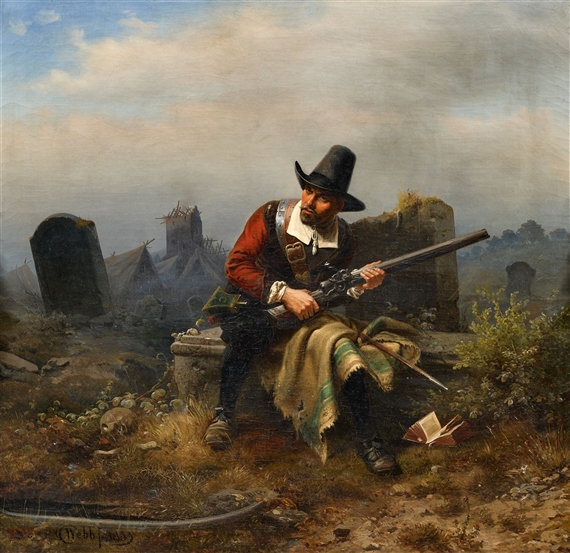
The Thirty Years’ War coined just how messed the political map of the European continent was in the 17th century.
What started as a localized conflict between various Protestant and Catholic states (duh!) evolved into a full-scale conflagration. It was one that ravaged Central Europe and left behind the bulkiest death toll the continent has ever since in such a short time.
Every power had a good pretext to join the Thirty Years’ War.
War is good! Save the King! Power to the People! We are the best! They are the worst scum imaginable! Kill them all. Rape their women! Kill their babies,all for our King!
By far the most flamboyant intervention was that of King Gustavus Adolphus of Sweden, who engaged in one of the most bizarre adventures that took his troops deep into southern Germany.
Thirty Years' War in British English noun a major conflict involving principally Austria , Denmark , France, Holland , the German states , Spain , and Sweden , that devastated central Europe, esp large areas of Germany (1618–48). - Thirty Years' War definition and meaning | Collins English
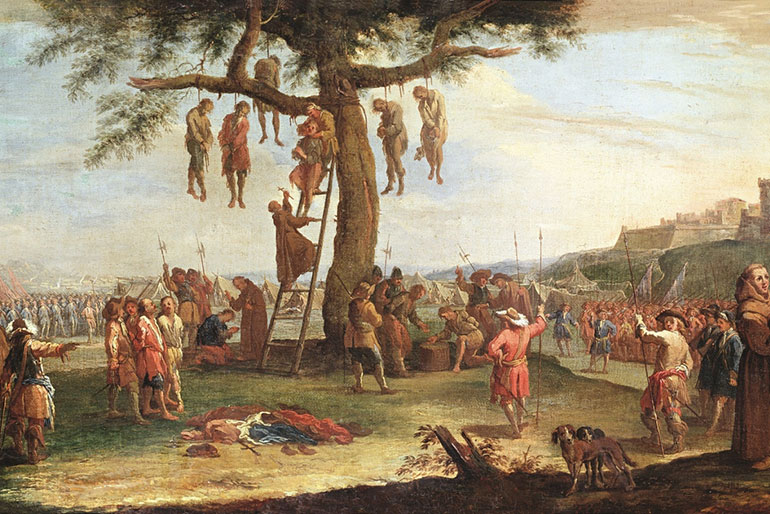
The Thirty Years’ War brevetted cruel execution methods like so-called Defenestration. In this “humane” procedure, soldiers threw out the windows the civilians of the captured cities.
The first all-out war that engulfed Europe showed major powers just how “fun” can be to fight on a continental scale. What followed was much worse.
The human condition. In Europe. The most “civilized” place on the planet.
Expert Tip: No place is immune from war or conflict.
Europe was not the only place where people enjoyed slaughtering each other.
6. Chinese Civil War – 8 million
Following in the footsteps of Russia, when they over threw their oligarchy, the poor Chinese peasants tried to do the exact same thing. They set up factions and fought each other on a very bloody and enormous land mass.
Expert Tip: Oligarchies tend to anger the peasants & serfs. This results in war.
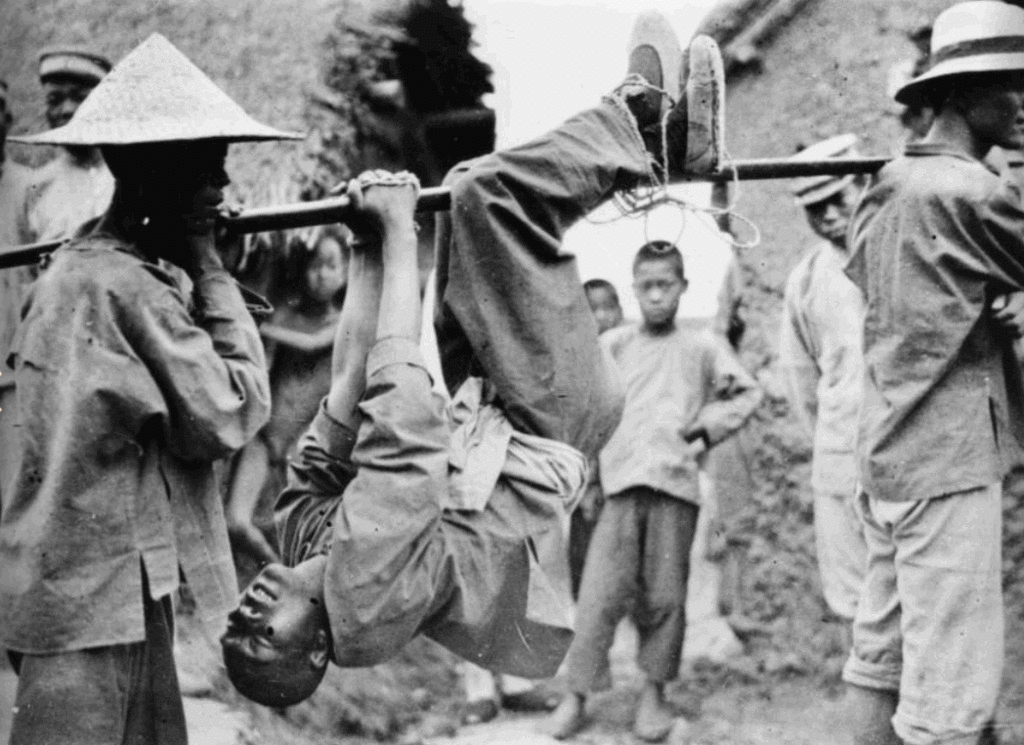
The Chinese Civil War opposed forces loyal to the Republic of China to the army assembled by the Communist Party.
- Oligarchy = Nationalist Republic of China.
- The fighting poor = Communist Party
What followed was a bewildering war with a temporary and curious anomaly.
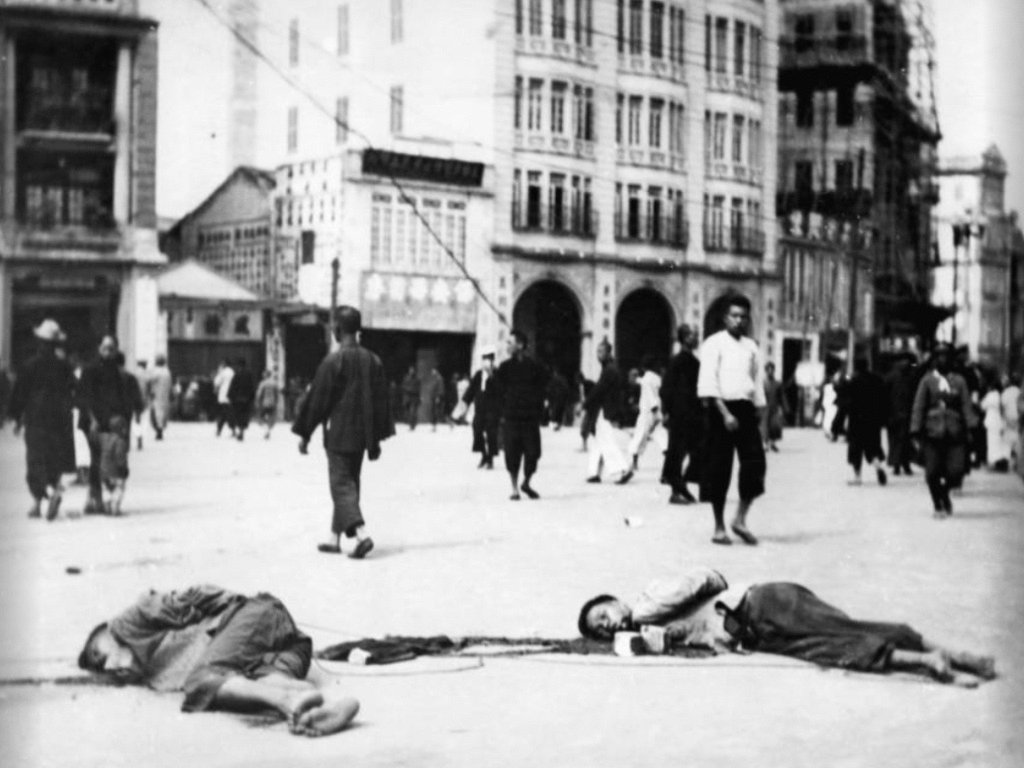
Probably the strangest fact about the conflict was that it took a decade-long hiatus. Between 1936 and 1946, the Nationalists and the Communists formed a United Front that opposed the territorial claims of Imperial Japan.
Once WWII ended, the two enemies were back at each other’s throats.
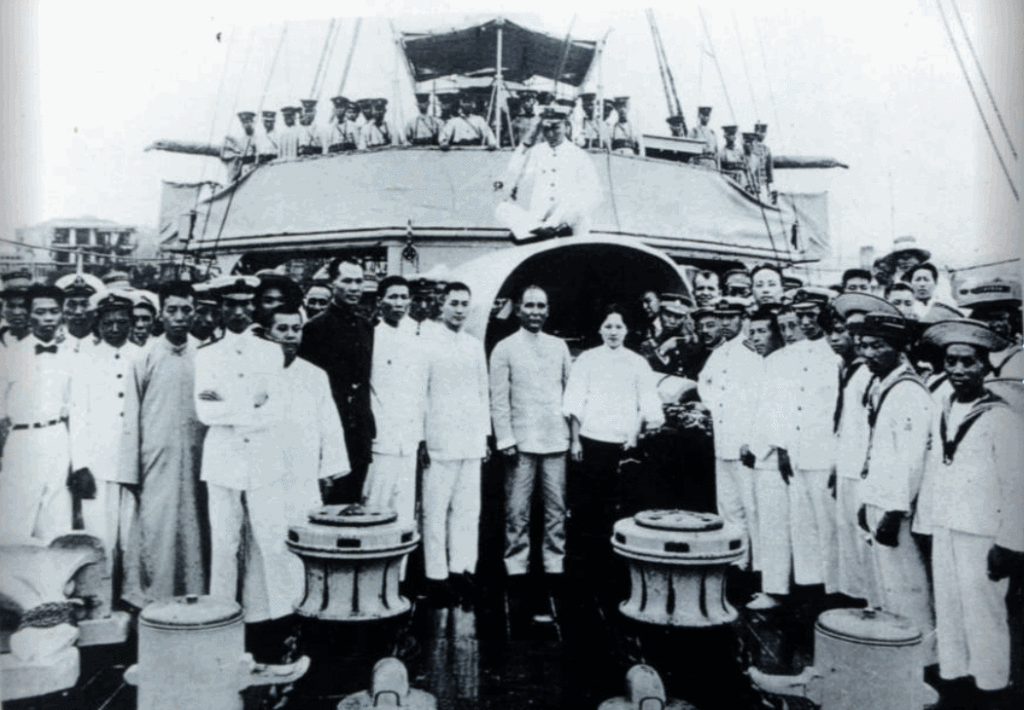
Mao Zedong (the leader of the Communist Party) rose as a leader during the Great March, a strategic retreat of the Communist forces that would weight decisively in their victory.
The Communists (the rural poor) won, and chased the oligarchy to the island of Taiwan. Which now is the remaining stronghold for the remaining remnants of Chinese “blue blood”.
The Chinese have known thousands of years of conflict in a very up-front and personal way. And when the communists took over, they failed miserably. They did not know how to do anything right, and millions died by starvation, poverty and internal “turf wars”.
Expert Tip: Never allow yourself to be disarmed by progressive Marxists.
Their last conflict was in 1966 when the progressive Marxists lost it completely. They, in turn, were overthrown by a government that embraced a new kind of socialism. It’s socialism with capitalism; or in other words “socialism with Chinese characteristics”.
America should take note.
Expert tip: China is communist in name only.
The Chinese, a nation of merit, has known complete suffering and devastation for centuries. They view war as a terribly personal thing that must be avoided at all costs. However, if it cannot be avoided…
…It must be dealt with quickly and absolutely.
7. Russian Civil War – 9 million
Now, according to American media and history books, there was this pesky “Russian Revolution”. It was a time when the communists overthrew the the Tsar.
What they fail to tell you is that it was like the “French Revolution”. The downtrodden peasants over thrown the ruling oligarchy. Then once the oligarchy was neutered, a group of idealistic Marxists took over. They started killing everyone…
…all in the name of a progressive utopia.
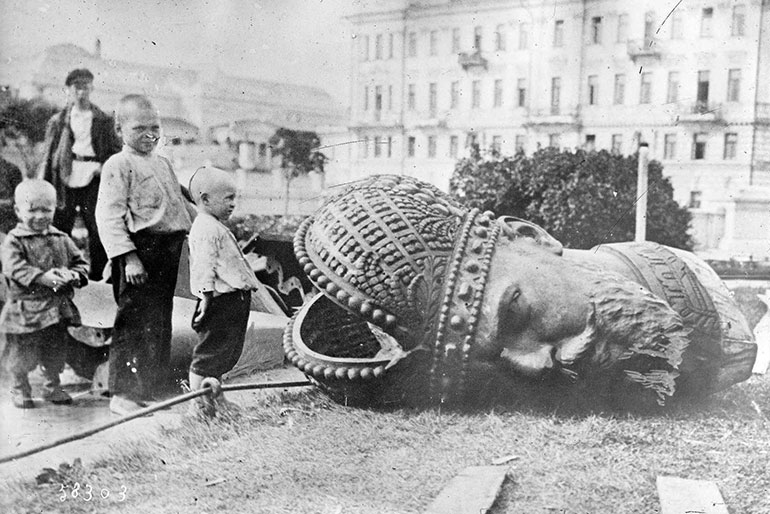
One century ago, Russia had a hard time deciding its political future. There were many participants. But, all being said and done it was really down to two sides;
- The wealthy oligarchy.
- The uneducated poor.
The Red Army (the idealistic poor) and the White Army (the defenders of the oligarchy) faced each other in a bloody war. It was a war that claimed millions of lives and kept the country in turmoil for six years.
Everything started once the impoverished people of Russia have had enough with their Tsar and the rest of the ruling oligarchy.
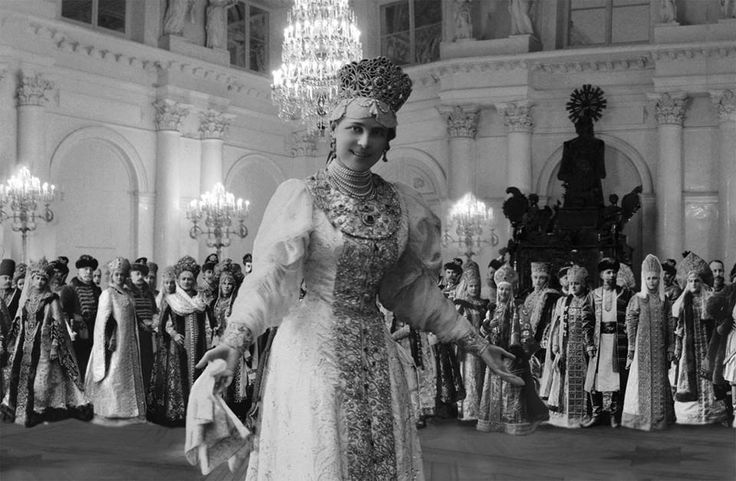
In just one year (1917), the Russians went through two revolutions.
- One toppled the century-old monarchy…
- … while the other gave way to the Communist takeover.
You might be surprised to know that Russia’s future was quite uncertain in the early phases of its civil war.
Republicans, pro-monarchists, fascists – all wanted to fill in the power vacuum and exploit the gullible babushkas. Historians are still not sure what made Russia such a fertile ground for Communist Marxist ideology.
Expert Tip: People will accept governance in just about any form as long as it’s not an oligarchy.
I attribute it to being treated like dirt by the wealthy aristocrats.
Although a lot of fighting took place throughout the Russian Civil War, the bulk of the victims is represented by civilians who happened to side with the losers.
Lenin and the gang cleansed society and painted it in blood.
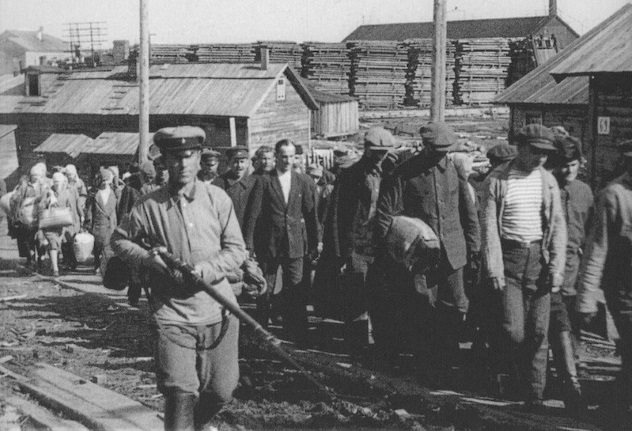
That might answer why the Soviet Union saw little internal political friction throughout its existence. Why? Well, everyone who could possibly… remotely… be a threat was killed.
Expert Tip: Progressive Marxists eventually kill everyone.
Now…
Check out the atrocities committed by a bunch of Spanish soldiers!
8. Spanish Conquest of Peru – 9 million
As late as 1528, the Inca Empire was a cohesive unit, ruled by one dominant ruler, Huayna Capac.
He died, however, and two of his many, many sons, Atahualpa and Huáscar, began to fight over his empire. (Being a King has sexual advantages, don’t you know…)
For four years, a bloody civil war raged over the Empire and in 1532 Atahualpa emerged victoriously.
It was at this precise moment, when the Empire was in ruins, that Pizarro and his men showed up: they were able to defeat the weakened Inca armies and exploit the social rifts that had caused the war in the first place.
The Spanish conquest of Peru was one of the most important campaigns in the Spanish colonization of the Americas. After years of preliminary exploration and military skirmishes, 168 Spanish soldiers under conquistador Francisco Pizarro, his brothers, and their native allies captured the Sapa Inca Atahualpa in the 1532 Battle of Cajamarca. - Spanish conquest of the Inca Empire

The Spanish conquest of Peru is a dark chapter of human history, one that holds the story of the 9 million Incas that perished.
Francisco Pizarro is the man responsible for conquering an entire empire with only a handful of well-equipped soldiers. The conquistador put to work superior weapons and a cunning plan.
Expert Tip: Beware of strangers with advanced technology and a love of gold.
In November of 1532, Inca Emperor Atahualpa was captured by the Spanish: he had agreed to meet with them, feeling that they did not pose a threat to his massive army. This was but one of the mistakes the Inca made.
Later, Atahualpa’s generals, fearing for his safety in captivity, did not attack the Spanish while there were still only a few of them in Peru: one general even believed Spanish promises of friendship and let himself be captured.
The soldiers and people of the Inca Empire did not meekly turn over their homeland to the hated invaders. Major Inca generals such as Quisquis and Rumiñahui fought pitched battles against the Spanish and their native allies, notably at the 1534 Battle of Teocajas.
Later, members of the Inca royal family such as Manco Inca and Tupac Amaru led massive uprisings: Manco had 100,000 soldiers in the field at one point. For decades, isolated groups of Spaniards were targeted and attacked. The people of Quito proved particularly fierce, fighting the Spanish every step of the way to their city, which they burned to the ground when it became apparent that the Spanish were certain to capture it.
The drawing below shows the climax of the Spanish blitzkrieg against the Incas. Pizarro ambushes emperor Atahualpa, who is captured and executed.
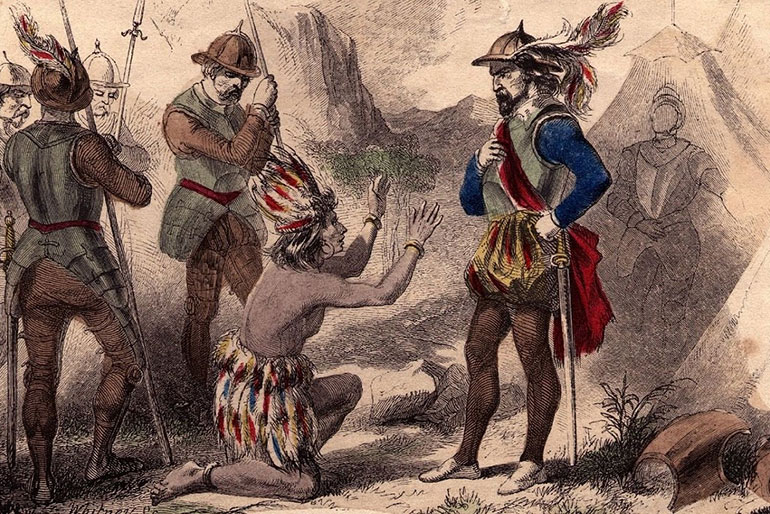
Although the Incas rebelled multiple times against the foreign invaders, there was little they could do regarding fighting the infectious diseases the Europeans brought with them. The Spanish conquest of the Inca Empire formally ended in 1572.
Although many of the native people fought back fiercely, others allied themselves with the Spanish. The Inca were not universally loved by the neighboring tribes they had subjugated over the centuries, and vassal tribes such as the Cañari hated the Inca so much that they allied themselves with the Spanish: by the time they realized that the Spanish were an even bigger threat it was too late. Members of the Inca royal family practically fell over one another to gain the favor of the Spanish, who put a series of puppet rulers on the throne. The Spanish also co-opted a servant class called the yanaconas: the yanaconas attached themselves to the Spaniards and were valuable informants. The Inca had skilled generals, veteran soldiers and massive armies numbering in the tens or hundreds of thousands. The Spanish were greatly outnumbered, but their horses, armor, and weapons gave them an advantage that proved too great for their enemies to overcome. There were no horses in South America until Europeans brought them: native warriors were terrified of them and at first, the natives had no tactics to counter a disciplined cavalry charge. In battle, a skilled Spanish horseman could cut down dozens of native warriors. Spanish armor and helmets, made of steel, made their wearers practically invulnerable and fine steel swords could cut through any armor the natives could put together.
By that time, the second most advanced civilization of the New World booked a one-way ticket into oblivion.
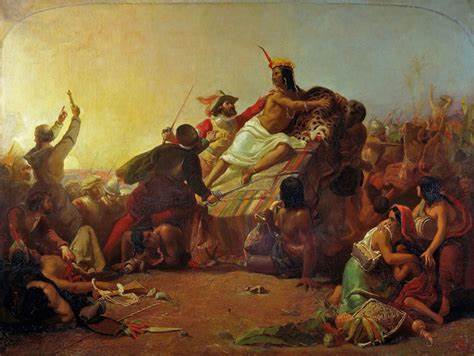
The next page reveals another bloody conflict that shocked the medieval world.
9. Conquests of Tamerlane – 17 million
Here we have a very powerful and ruthless man. His name was Tamerlane, and he was the most powerful general under Genghis Khan.
Initially, Greater Mongol State was the name of the Mongol Empire. In the world’s history, Mongol Empire was the only empire that managed to take over and rule a number of countries and territories. But before it happened, war was declared. It happened from the year 1207-1472.
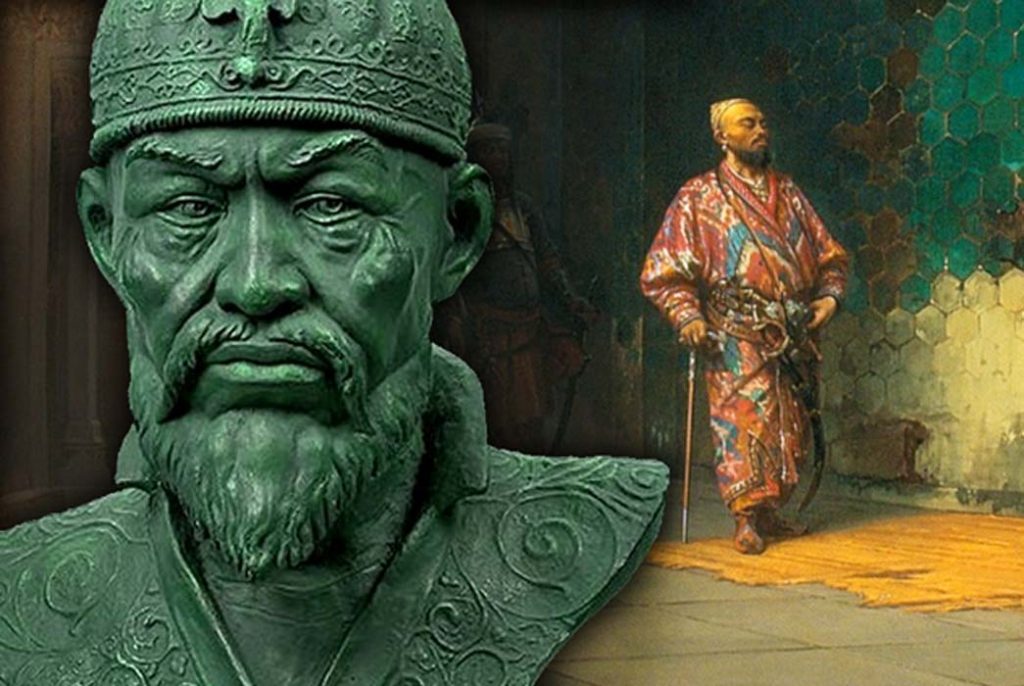
Take a good look at Tamerlane, the ruthless ruler responsible for killing 5% of the world population throughout the years he campaigned.
Timur, historically known as Tamerlane (1336 - 1405), was a Turco-Mongol conqueror and the founder of the Timurid Empire in Persia and Central Asia. Timur rose through the ranks by gaining the respect of local chieftains due to his personal valor in combat and his brigandage. His actions, whether raiding or in combat, caused many to flock to him. It was during a battle that arrows struck his right arm and leg which left him partially paralyzed. Because of this, Europeans referred to him as ‘Tamerlane’ or ‘Timur the Lame.’ Timur was born in Transoxania a member of Barlas tribe. He rose to power among the Ulus Chaghatay. The Ulus Chaghatay was nomadic tribal confederation that formed the central region of Mongolian Chaghadaid khanate. Timur's story is similar to Genghis Khan; How true these stories are is up for debate. - When I rise, the world shall tremble! Tamerlane’s Deadly Drive into India—Part I
Tamerlane (also known as Timur the Lame) had the ambition of restoring the Mongol Empire, almost 150 years after the death of Genghis Khan. Between 1370 and 1405 he toured Asia, sacking cities, painting their walls with blood, and destroying all the key power structures.
Timur played good cop – bad cop with the people he conquered. His most notable civilian bloodsheds are the sacking of Delhi (100,000) and crushing the revolt of Isfahan (200,000).
Expert Tip; Better to be alive and living in poverty than to be killed clutching your possessions.
You will be surprised to know Tamerlane was close to engaging in a conflict that would have blown to pieces the Asian continent. Luckily, he died before ordering his army to attack the Ming dynasty of China.
The self-entitled “Sword of Islam” cut deep and merciless. Compiling the sources of the time, we confront horrifying statistics. More than 17 million perished because ambitious Tamerlane dreamt of taking over the world.
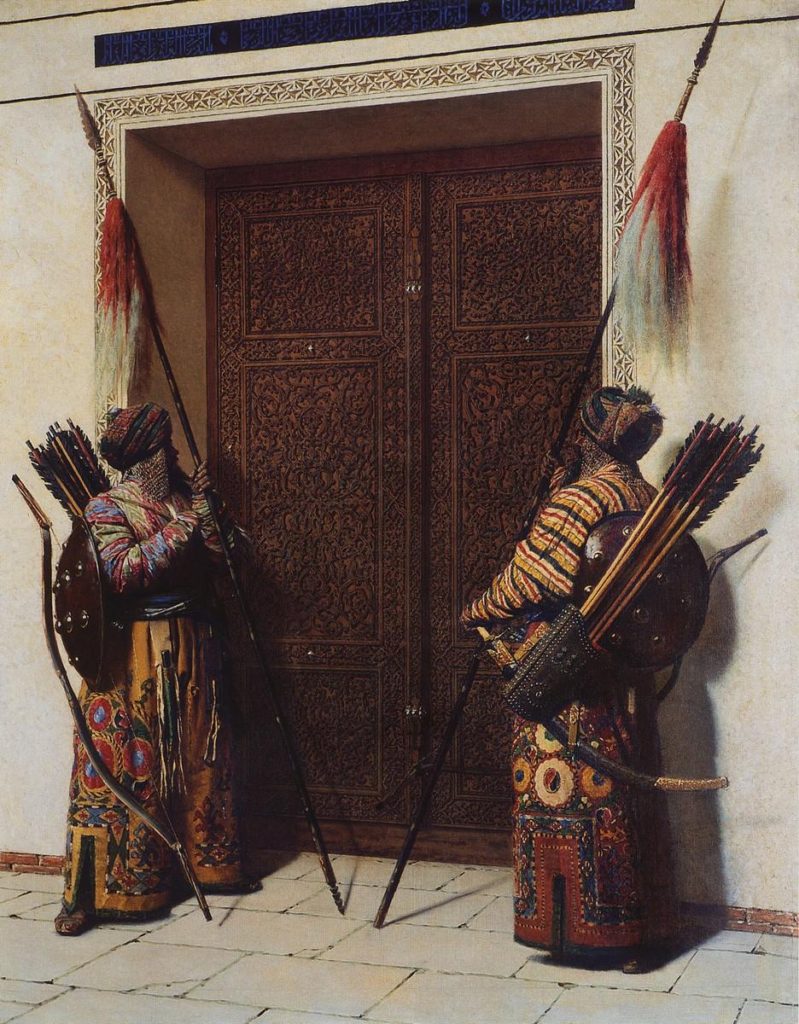
Check out China’s less know rebellion!
10. An Lushan Rebellion – 21 million
Starting December 16, 755-February 17, 763, An Lushan Rebellion happened. It was during China’s Tang Dynasty. The war actually started when An Lushan who happened to be an ex-Tang general declared himself to be the new emperor.
The An Lushan rebellion was the end and a new start into reclaiming the Tang dynasty. It did not only affect the royal empire but the people as well were affected due to this warfare. It took years before the wounds of the past were healed in the empire. - An Lushan Rebellion - The Devastating An-Shi Rebellion

At first glance, the An Lushan Rebellion seems to deserve just a footnote.
Expert Tip: History will never be able to coney the suffering of you or your people.
That’s the error most historians make when they fail to check the numbers. More than 21 million perished as a result of an attempted coup that was close to overthrowing one of the most influential dynasties of the time.
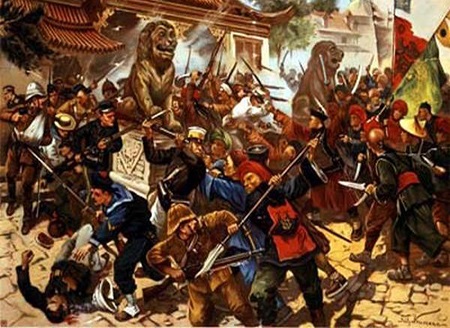
Take a good look at the man who can be held responsible for the mess. General An Lushan detonated order and peace once he proclaimed himself emperor of Northern China in 755 AD. Seven years of turmoil followed, during which China lost one-third of its population.
The painting below depicts the flight of the emperor from the capital of Chang’an, immediately before Lushan’s army seized it.
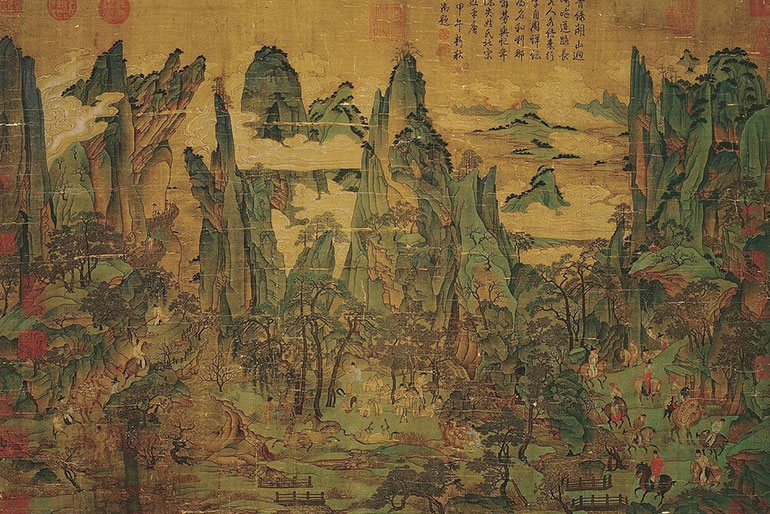
Although going that far, killing that many people, the rebellion eventually failed and came to an end in 763 AD.
The restored Tang became severely weakened and would exit the stage of history in less than two centuries later.
You have to see Spain’s second carnage in the New World…
11. Spanish Conquest of Mexico – 24 million
Only three decades after Christopher Columbus had discovered the New World the Spaniards were already busy exterminating the local populations at a ferocious scale.
The Spanish Conquest (1519-1521) April 21, 1519--the year Ce Acatl (One Reed) by Aztec reckoning-- marked the opening of a short but decisive chapter in Mexico's history. On that day a fleet of 11 Spanish galleons sailing along the eastern gulf coast dropped anchor just off the wind-swept beach on the island of San Juan de Ulúa. - The Spanish Conquest (1519-1521) : Mexico History
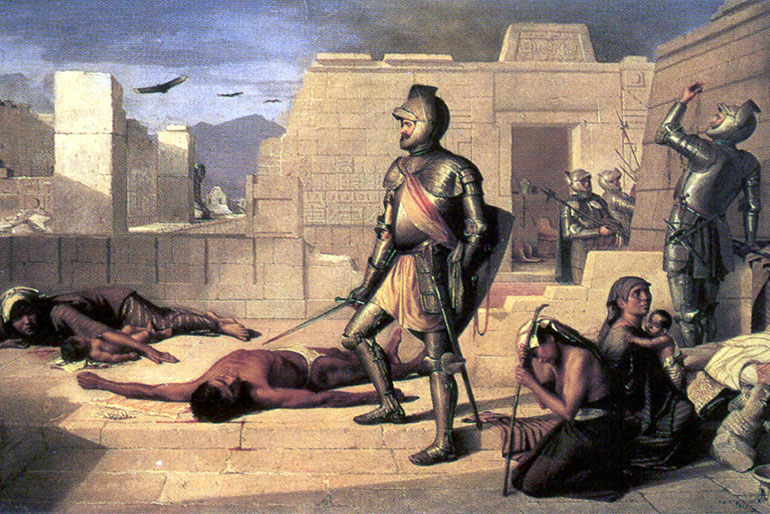
More than 24 million died throughout the Spanish conquest of what is modern day Mexico. Compared to that, the bloody sacrifices so engraved in Aztec culture appear like a bruise your mother kisses to make it go away.
How could less than 2,000 conquistadors overcome an army of 300,000 Aztecs, their well-fortified capital of Tenochtitlan, and the advantage of the home ground? How could tens of millions be slaughtered in a matter of decades?
The story of the Spanish conquest, as it has been commonly understood for 500 years, goes like this: Montezuma surrendered his empire to Cortés. Cortés and his men entered Tenochtitlán and lived there peacefully for months until rebellious Aztecs attacked them. Montezuma was killed by friendly fire. The surviving conquistadors escaped the city and later returned with Spanish reinforcements. They bravely laid siege to Tenochtitlán for months and finally captured it on Aug. 13, 1521, with the Spanish taking their rightful place as leaders of the land we now know as Mexico. Conquest accomplished. "History is messy, and this story tidies up all of that mess and turns the messy, unpleasant war that took place 500 years ago into a nice, tidy dramatic narrative that has a hero [Cortés] and antihero [Montezuma] and has some kind of climactic, glorious ending," says Restall. In When Montezuma Met Cortés, Restall revises this story. He ditches the word "conquest" and instead refers to the time as the Spanish-Aztec war. He says Cortés was a "mediocrity" with little personal impact on the unfolding of events and refocuses on complex territorial battles between the Aztecs and their rivals. The Tlaxcallan Empire, which allied with the Spanish, was the driving force, outnumbering conquistadors 50-to-1 during the war with the Aztecs. Smallpox and a betrayal from an Aztec ally dealt the final blow. The wondrous island city fell, but it would take years for the Spanish to establish control in New Spain. -NPR
Hernán Cortés exploited European style warfare to its maximum.
For the superstitious Aztecs, the horse and the guns appeared as the weapons of the Gods.
The Spanish contingent also boosted its numbers by initiating an alliance with the local Tlaxcala.

Nevertheless, the biggest aid came in an invisible form. European germs proved to be a formidable army and childhood diseases like small pox and measles met no natural immunity in the bodies of the indigenous populations.
Yup. Biological warfare wiped out a complete empire.
Expert Tip: Beware of the use of biological warfare. It’s fighting war by stealth.
Explore on the next page another Chinese conflict that killed millions!
12. Qing vs. Ming – 25 million
Medieval China saw enough dynastic drama to make the wars in the West look like children’s play. Maybe that’s why Chinese movies and drama always focus on that time period.
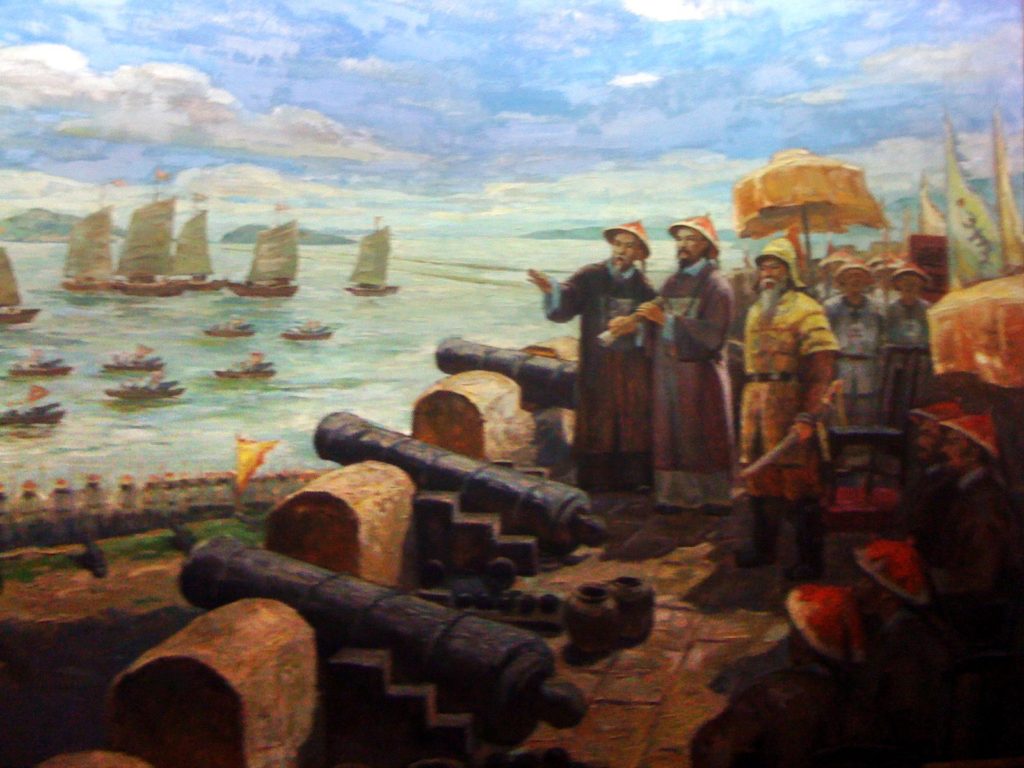
Between 1618 and 1683, China completed a full transition from its southern Ming emperors to the new ruling elite coming all they from northern Manchuria. You could say that in this fragment of history the Starks were victorious.
As you suspect, the Ming did not leave without a fight. The Manchu (Qing) retaliation was unprecedented. More than 25,000,000 lost their lives in a conflict that spread across the entire land.

Whole provinces like Sichuan and Jiangnan were completely depopulated, and chronicles mention massacres like the one of Yangzhou where 800,000 innocent souls perished.
Expert Tip: Major wars result in the depopulation of large swaths of territory. Entire states can end up empty.
The expression “women and children first” had a terrifyingly different meaning for the Qing generals.
At this point, we need to stress the fact that Qing Manchurians were foreigners who managed to conquer China mostly through betrayal and manipulation.
Their savagery will be avenged similarly just three centuries later.
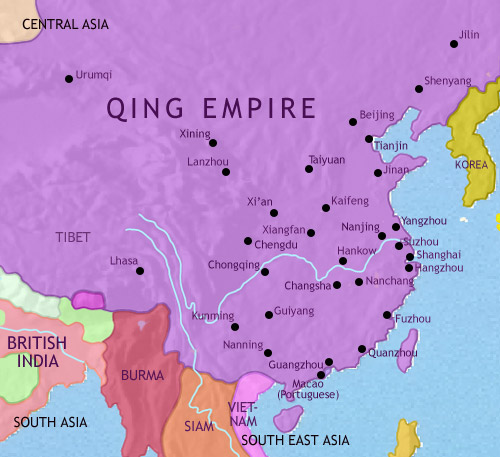
Check out the biggest land empire ever and the bloodshed it created.
13. Mongol Conquests – 35 million (+ 200 million bonus)
The Mongol Empire: Expansion of the Mongol empire from 1206 CE-1294 CE. During Europe’s High Middle Ages the Mongol Empire, the largest contiguous land empire in history, began to emerge. The Mongol Empire began in the Central Asian steppes and lasted throughout the 13th and 14th centuries. - The Mongol Empire | Boundless World History
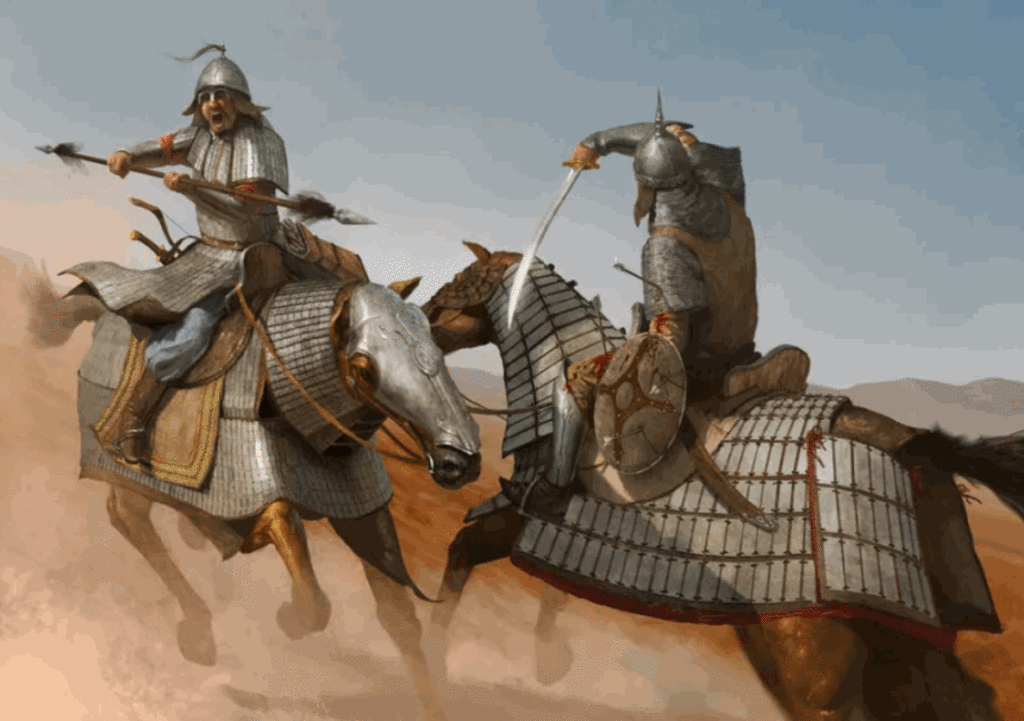
Watching a live world map of the world Mongol expansion shows just how quick and efficient the steppe riders moved across Eurasia.

Mongols dominated the battlefields with their slim and fast mounted archers that made the most of Europe’s sluggish armored knights.
1. In 1201, Genghis Khan was shot in the neck during a battle and asked the defeated army who had shot “his horse”, trying to downplay the injury. The archer voluntarily confessed that he shot Genghis Khan himself and not his horse. He refused to beg for mercy saying if Genghis Khan desired to kill him, it was his choice, but if he would let him live, he would serve Genghis Khan loyally. Genghis Khan spared him, turning him into a great general. – Source 2. When Genghis Khan sent a trade caravan to the Khwarezmid Empire, the governor of one of the city seized it and killed the traders. Genghis Khan retaliated by invading the empire with 100,000 men and killing the governor by pouring molten silver down his eyes and mouth. Genghis Khan even went so far as to divert a river through the Khwarezmid emperor’s birthplace, erasing it from the map. – Source 3. Genghis Khan killed an estimated 40 million people, resulting in a man-made climate change. The Mongol invasions effectively cooled the planet, scrubbing around 700 million tons of carbon from the atmosphere. – Source 4. Genghis Khan’s chief adviser was a captured scholar named Yelu Chucai. His contribution to the Mongol Empire was to suggest that the Mongols not kill everyone, but tax them instead. – Source 5. Genghis Khan would marry off a daughter to the king of an allied nation, dismissing his other wives. Then he would assign his new son-in-law to military duty in the Mongol wars, while the daughter took over the rule. Most of his sons-in-laws died in combat, giving him shield around the Mongol lands. – Source
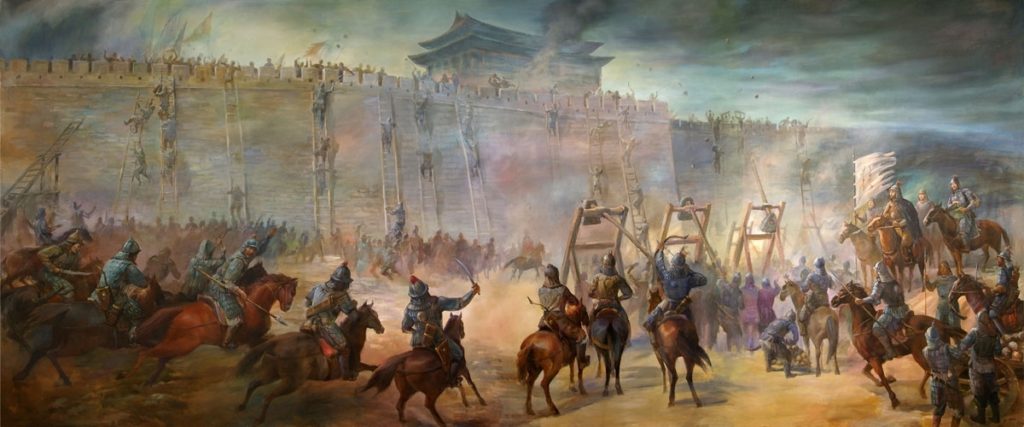
Mongol warriors had the bad habit of executing hundreds of thousands of civilians at a time, making religious fanatics believe the Antichrist descended upon Earth.
6. There’s a place in Mongolia called Ikh Khorig that was declared sacred by Genghis Khan. The only people allowed to enter were the Mongol Royal Family and a tribe of elite warriors, the darkhat, whose job was to guard it, punishment for entering being death. They carried out their task for 697 years, until 1924. – Source 7. Legends abound regarding the cause of Genghis Khan’s death, ranges from a fall from his horse while hunting, to an arrow to the knee, to an assassination plot executed by a captured princess. – Source 8. Genghis Khan exempted the poor and clergy from taxes, encouraged literacy, and established a free religion, leading many people to join his empire before they were even conquered. – Source 9. Shah Jahan, the emperor who built the Taj Mahal was a direct descendent of Genghis Khan – Source 10. The Mongols celebrated a victory over the Russians by laying survivors on the ground, dropping a heavy wooden gate on them, and then having a victory banquet on top of it while the victims suffocated and were crushed to death. – Source
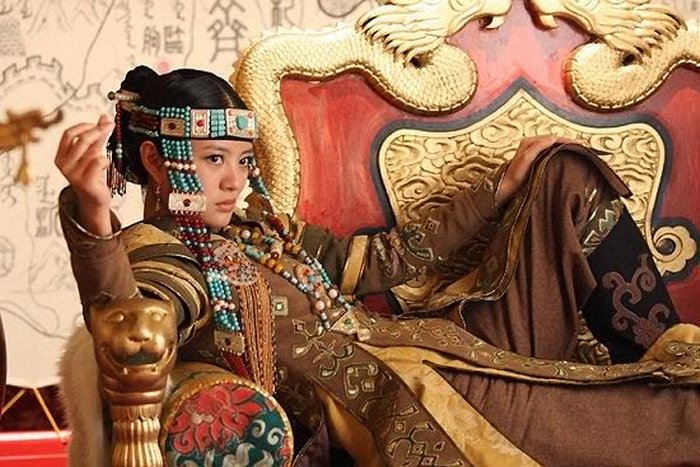
The armies of Genghis Khan and his lieutenants operated like a surgeon, performing a lobotomy on most states of Asia and Eastern Europe.
Expert Tip: When confronting a large, disciplined Asian nation it is best to be their friends. The alternative is extermination.
11. Töregene Khatun, the daughter-in-law to Genghis Khan, ruled the Mongol Empire for 5 years at the height of its power and was arguably the most powerful woman in the history of the world – Source 12. The Mongols killed so many people in the Iranian Plateau that some historians estimate that Iran’s population did not again reach its pre-Mongol levels until the mid-20th century. – Source 13. Mongols were actually outnumbered in most of their victories in battles. They still managed to deceive their enemies by elaborate ruses like mounting dummies atop horses and tying sticks to the horses’ tails to create dust storms. – Source 14. In 1258, the Mongols destroyed Baghdad. Survivors said that “the waters of the Tigris ran black with ink from the enormous quantities of books flung into the river and red from the blood of the scientists and philosophers killed.” The siege marked the end of the Islamic Golden Age. – Source 15. The Mongols pulled their bowstrings back with their thumb. To prevent damage to their thumbs they created thumb rings. – Source
The only thing that stopped the world from becoming one giant pasture for Mongol horses was the sudden death of their supreme ruler.
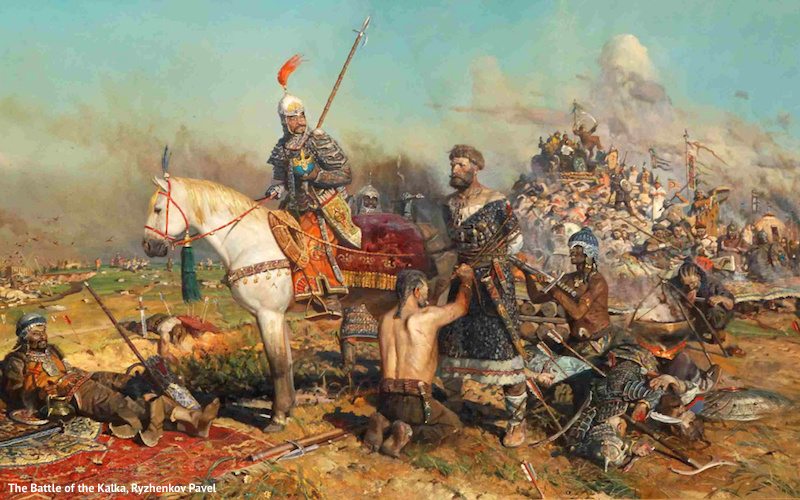
16. Khutulun was a warrior princess. She was a Mongol princess who won 10,000 horses wrestling every man who wanted to marry her. – Source 17. People of the Mongol empire never washed their clothes or themselves because they believed washing would pollute the water and anger the dragons that controlled the water cycle. – Source 18. In 1254 C.E. Genghis Khan organized a formal religious debate between teams of Christians, Muslims, and Buddhists. The debate went on for multiple rounds on a variety of theological topics until the participants became so drunk that it concluded without any clear winner. – Source 19. Genghis Khan is considered the “most successful biological father in human history” with over 16 million descendants in Central Asia. – Source 20. In his youth, Genghis Khan killed his half-brother Bekhter for not sharing food.
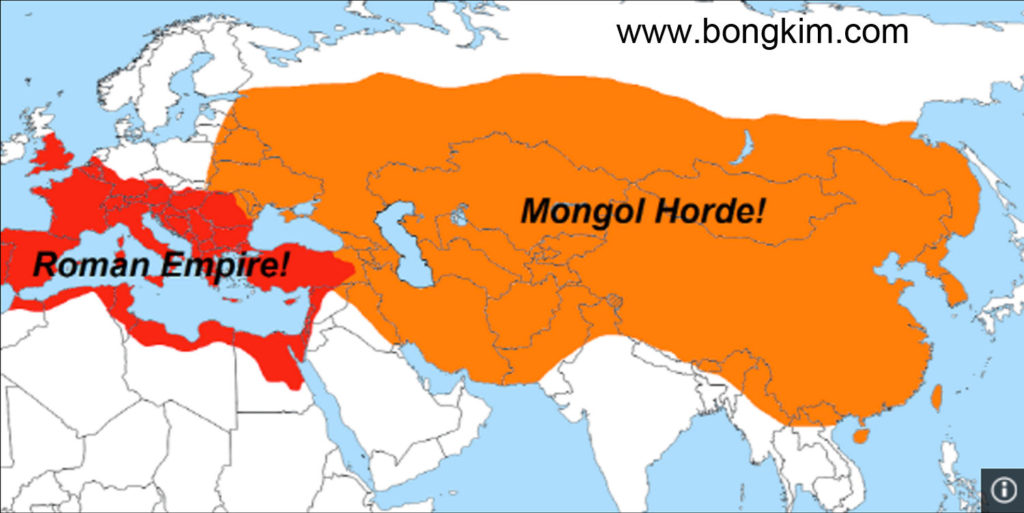
21. Mongol leader Genghis Khan never allowed anyone to paint his portrait, sculpt his image or engrave his likeness on a coin. The first images of him appeared after his death. – Source 22. Genghis Khan invaded China with 90,000 troops and dominated the largest army in the world, the Jin Dynasty’s 1 million+ troops, and destroyed over 500,000 of them in the process and gained control of Northern China and Beijing. – Source 23. Mongols had rules against spilling noble blood over the ground. Instead, they used loopholes like making them bend backward until their backbones snapped, pouring molten silver into eyes and ears, and being rolled up in a rug and trampled to death by the Mongol cavalry. – Source 24. The Mongol Empire installed empire-wide messenger/postal stations 15-40 miles apart, stocked with food and fresh mounts that required passports for use, allowing for communication over the largest continuous empire in history. – Source 25. The deadliest war in the history was WWII, but the Mongol Invasions are a close second, despite occurring 700 years earlier, when the world’s population was only a fifth of what it was in 1945. – Source
Just when the people of Europe were celebrating the end of the Mongol menace, another wave of death immediately followed suit and bathed the continent in blood throughout the 14th century.
The riders have brought with them the bubonic plague.
Expert Tip: “Double Tap” is the only way to make sure.
Let’s visit again the slaughterhouse China was in the past…
14. Three Kingdoms War – 38 million
The Three Kingdoms War is one the bloodiest military conflicts in Chinese history.

Most people perceive China as a monolith that existed peacefully since its inception until today. That is far from being true. Back when Europe was enjoying relative stability under Roman rule, the Celestial Empire confronted one of the most prolonged crisis.
Between 184 and 280 AD China was divided in three empires – Wei, Shu, and Wu. The three emerged after the breakdown of the Han dynasty and would be again reunited by the Jin monarchs.
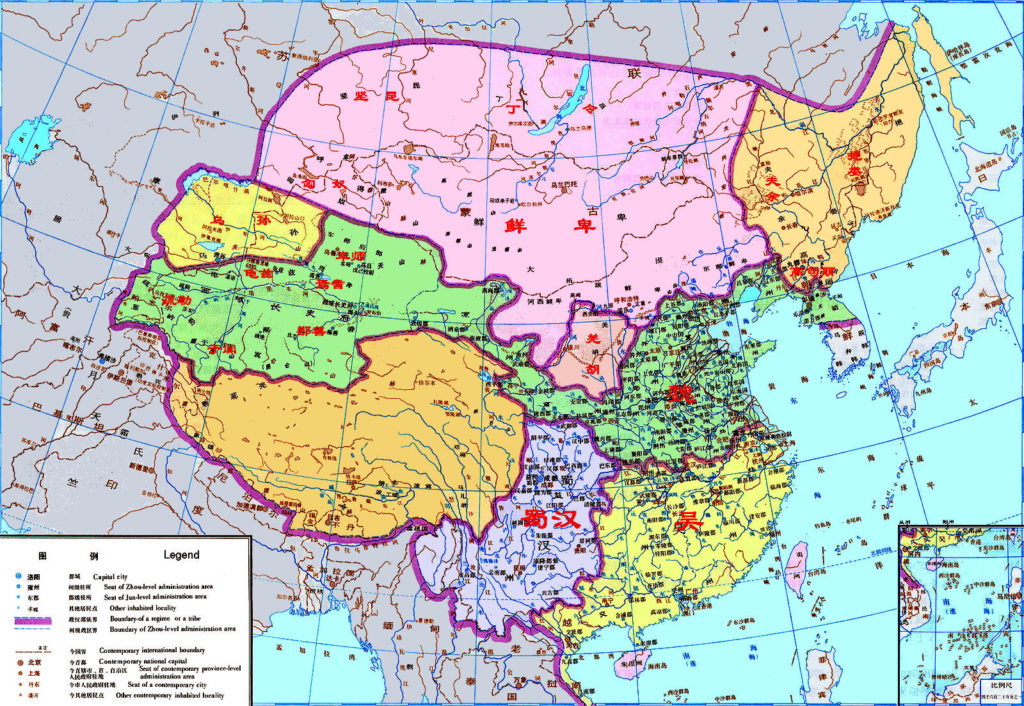
All historians base their life loss estimates on two national censuses that give a difference of 38 million. Whether the calculations were accurate will remain a mystery. Nevertheless, one thing is clear. China has a formidable capacity of regenerating its population.
It seems that the Chinese were so happy once the century-long conflict ended that they celebrated mostly in their beds.
Expert Tip: After conflict have lots and lots of sex.
As we approach the end of the list, the death toll rises to emotional levels.
15. World War I – 40 million
World War I proved once more just how messed up Europe’s political map was at that time.
World War I, international conflict that in 1914–18 embroiled most of the nations of Europe along with Russia, the U.S., the Middle East, and other regions. It led to the fall of four great imperial dynasties and, in its destabilization of European society, laid the groundwork for World War II. - World War I | Facts, Causes, & History | Britannica
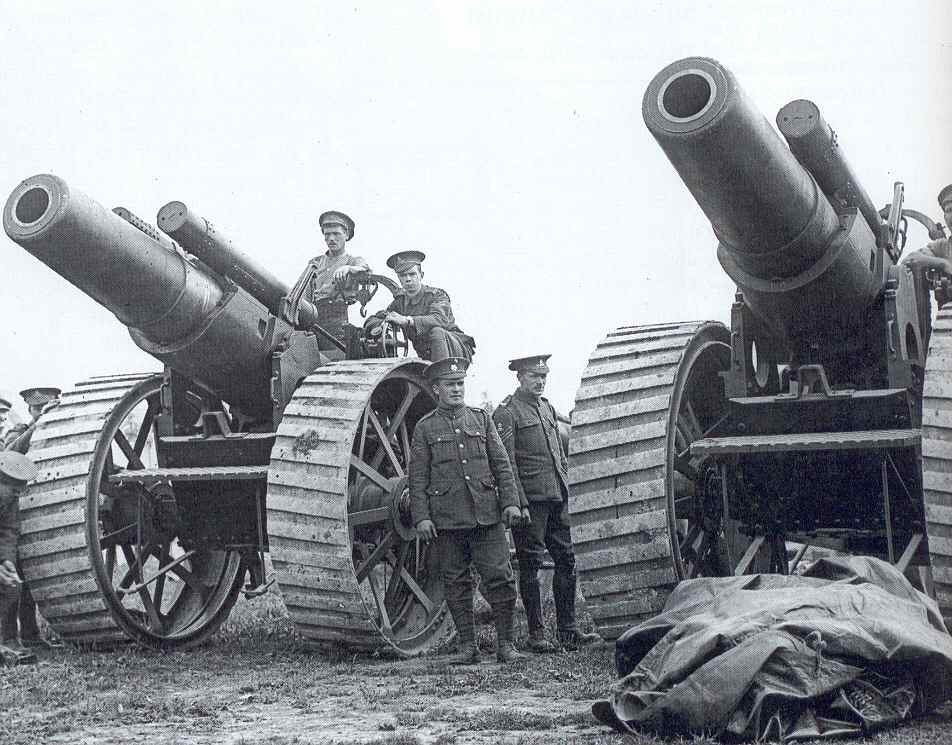
An intricate network of alliances, friendships, and protectorates turned the continent into a field of domino pieces waiting for the first push. The assassination of Archduke Franz Ferdinand of Austria was nothing but a pretext for nations to jump at each other’s throat with a ferocity never seen before.
12 Technological Advancements of World War I Tanks. Flamethrowers. Poison Gas. Tracer Bullets. Interrupter Gear. Air traffic control. Depth Charges. Hydrophones. Aircraft Carriers. Pilotless Drones. - 12 Technological Advancements of World War I | Mental Floss
The four short years of WWI would have made Napoleon and Genghis Khan jealous. Breakthrough technologies meant that soldiers could kill each other more efficiently. Airplanes and chemical weapons are just a few of the innovations that gave WWI its sad reputation.

The belief that WWI was a trench war is not far from the truth. Machine guns turned offensive warfare into mass suicide, so opponents often settled with bombarding each other’s positions and squabbling for the higher ground.
Expert Tip: Wars are not gallant and “Righteous”, they are dangerous and lethal events. Flee while that is still an option open to you.
Those lucky enough to survive WWI gave it a nickname that proved to be inaccurate. The “War to End All Wars” was followed after two decades by something even more frightening.
Check out China’s less know civil war!
16. Taiping Rebellion – 44.5 million
The Taiping Rebellion highlights one more time China’s incredible potential in hosting epic scale warfare.
The Taiping Rebellion was a civil war in China from 1850 to 1864. It was led by Hong Xiuquan. The Taiping Rebellion was against the ruling Qing Dynasty.About 20 million people died. [source?] Most of them were civilians. Hong established the Taiping Heavenly Kingdom (太平天囯). When it was most powerful, it had about 30 million people joining in it. - Taiping Rebellion - Simple English Wikipedia

Also known as the Taiping Civil War, the conflict lasted between 1850 and 1864 and produced the most dramatic death toll in history at that time.
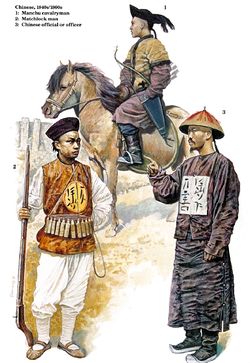
The rebellion started with the millenarian movement of the Heavenly Kingdom of Peace, which tried to overthrow the Qing dynasty.
Expert Tip: When the word “peace” is used as part of a slogan or name for a military organization, run away and flee. Nothing good can ever come of it.
The Taiping Rebellion, from 1851 to 1864, was the deadliest civil war in history. This column provides evidence that this cataclysmic event significantly shaped China’s Malthusian transition and long-term development that followed, especially in areas where the experiences that stemmed from the rebellion led to better property rights, stronger local fiscal capacity, and rule by leaders with longer-term governance horizons. - A Most Uncomfortable Thought About The Taiping Rebellion And The Black Death – Maybe That’s How Development Starts?
As you seen saw far on the list, every significant political change in the history of China came with savagery. The Taiping Rebellion counts as the bloodiest civil war in history and makes the American equivalent look like a banquet.
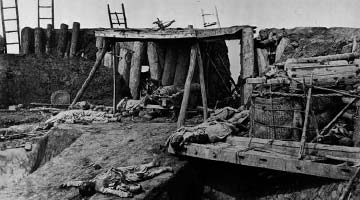
The man responsible for the uprising was Hong Xiuquan. He considered himself the brother of Jesus Christ and wanted to establish an empire based on his take on Christianity.
Expert Tip: Avoid people who claim religious or heavenly connections.
Although unsuccessful, the conflagration further weakened China’s Manchurian dynasty and set the stage for the victorious Communist Revolution we talked about earlier.
Let’s end the list with the bloodiest war that ever took place.
17. World War II – 58 million
As you probably guessed, World War II sits comfortably at the top of the charts.
World War II summary: The carnage of World War II was unprecedented and brought the world closest to the term “total warfare.”On average 27,000 people were killed each day between September 1, 1939, until the formal surrender of Japan on September 2, 1945. - World War II - World & US History Online
Countries brought each other close to total annihilation in a global conflict that lasted six years. The lure of extremist doctrines was enough to convince millions to take arms and engage in bloodshed like never seen before.

From the total of 58 million deaths, more than 40 million were civilians. Genocide, massacres, mass-bombings, as well as the inevitable epidemics and starvation, left the world (especially Europe) in ruins.
Between 1939 and 1945 our planet became a large war machinery that ran on steel and flesh, veiling the future with clouds of dark smoke. The romantic view on war finally met its doom in the Stalingrad slaughterhouse and the Nazi extermination camps.

Hopefully, humanity will never repeat the mistakes that led to WWII. Naturally, some pessimists saw in the Hiroshima and Nagasaki grand finally a preview for a third installment – the all-out war that will wipe civilization and send survivors back to the Stone Age.
Expert Tip: Wars always use the latest in killing technology. Expect the worst, and take the necessary precautions.
Conclusion.
It’s nice to think that we are “modern”, “enlightened”, “progressive’ and “forward thinking”. But, unfortunately that is a big lie. Humans, at best, can only sustain a calm period of coexistence for a handful of decades. No longer. The fact and the truth is that blood was spilled ruthlessly for most of human history.
We erronously believe that wars and bloodshed are behind us.
Nothing could be further from the truth. I argue that we have never been closer to global warfare and at a level that is beyond our comprehension.
It will involved WMD technology, whether it is nuclear or biological, and it will begin stealthy. Most people will be unaware that there is a war going on and that “chess pieces” are moving into position until it is too late.
The only thing that we can do is prepare for a SHTF event. That means get to know all of your neighbors, be prudent in your stockpiling of food, and supplies (for use or barter) and have a garden and fruit bearing trees. Make sure that you are armed and very, very skilled at using them. Finally, do not be timid about fighting. You will need to assess who your friends and your enemies are and kill them if need be.
May your preparations never come to fruition. God bless.
If you enjoyed this post, please be sure to check out my SHTF index page. Here…
SHTF ArticlesArticles & Links
You’ll not find any big banners or popups here talking about cookies and privacy notices. There are no ads on this site (aside from the hosting ads – a necessary evil). Functionally and fundamentally, I just don’t make money off of this blog. It is NOT monetized. Finally, I don’t track you because I just don’t care to.
- You can start reading the articles by going HERE.
- You can visit the Index Page HERE to explore by article subject.
- You can also ask the author some questions. You can go HERE to find out how to go about this.
- You can find out more about the author HERE.
- If you have concerns or complaints, you can go HERE.
- If you want to make a donation, you can go HERE.

